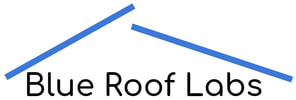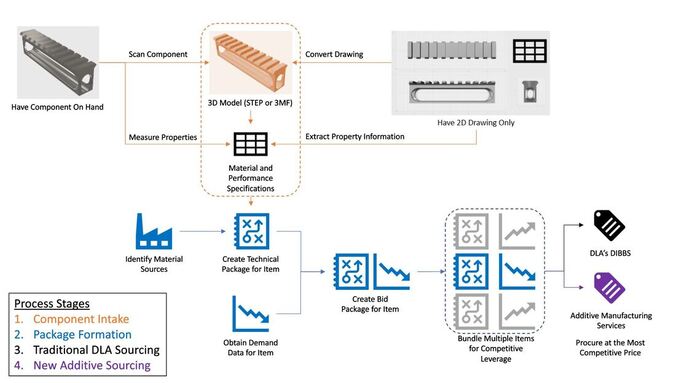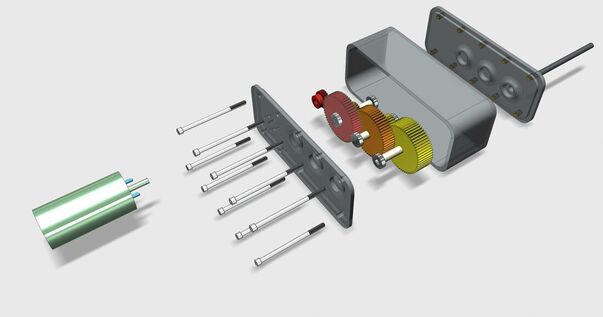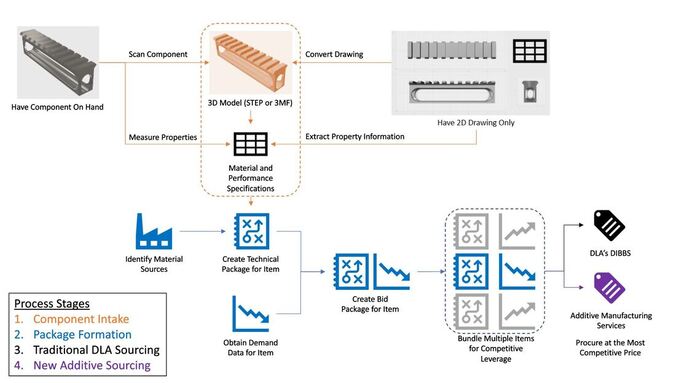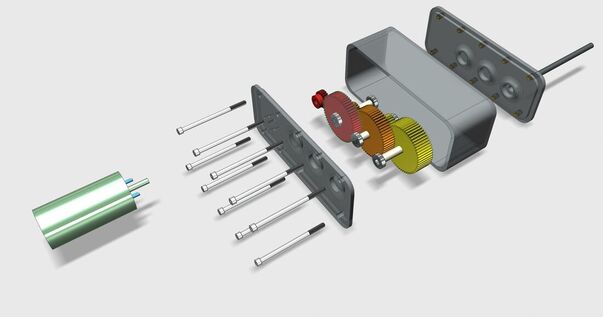What if we could utilize a virtual factory to bring legacy parts back to life accurately and efficiently?
|
|
Sourcing HMLV (high-mix, low-volume) parts with highly intermittent demand is a significant challenge. Large manufacturers and/or their sub-tier suppliers may go out of business or otherwise no longer be viable sources for essential components. Additionally, finding competitive sources for a spare part or legacy component one part at a time is labor-intensive, time-consuming, and often prohibitively expensive.
Newer additive manufacturing processes and rapid-turnaround CNC or digital manufacturing approaches both offer an attractive solution to these challenges. 3D digital geometry files are essential to bridge the gap between older parts with low volume intermittent demand and the manufacturers that could potentially supply them. Since the DLA may have only 2D engineering drawings and/or only small volumes of parts remaining in inventory, a new solution is needed that:
This proposed solution that we developed alongside Physna, Xometry, and Supply Dynamics (SDX) makes all of this a reality.
Newer additive manufacturing processes and rapid-turnaround CNC or digital manufacturing approaches both offer an attractive solution to these challenges. 3D digital geometry files are essential to bridge the gap between older parts with low volume intermittent demand and the manufacturers that could potentially supply them. Since the DLA may have only 2D engineering drawings and/or only small volumes of parts remaining in inventory, a new solution is needed that:
- Quickly and accurately extracts the essential information needed to quote new requirements from legacy parts or technical data that may prove to be incomplete or have hidden elements;
- An efficient method for producing a 3d model for the required part(s);
- A way to combine part geometries with essential material requirements;
- Systematically matches part attributes and material input requirements;
- Groups and bundles HMLV parts with similar higher-volume bid packages that may be planned in the future.
This proposed solution that we developed alongside Physna, Xometry, and Supply Dynamics (SDX) makes all of this a reality.
The goal of the virtual factory project is to bring legacy parts back to life accurately and efficiently. Components are discontinued all the time due to changes in demand, available machining processes, and assembly discontinuation. There are current solutions for bringing back legacy parts, but they are often very expensive and the process from start to finish is draining. The virtual factory project utilizes modern technologies in order to make the process faster, more efficient, and more affordable for clients.
The virtual factory project follows four process stages.
The virtual factory project follows four process stages.
- Component Intake
- Package Formation
- Traditional DLA Sourcing
- New Additive Sourcing
If one component is on-hand, the component can be digitally scanned and non-destructively tested to determine its material and performance specifications.
If only a 2D drawing is available, it can either be digitally processed into a 3D part file or it can be attributed using Supply Dynamics’ proprietary, ITAR-compliant, Part Attribute Characterization (PAC) process, whereby information on the 2D drawings is accurately and inexpensively documented.
If only a 2D drawing is available, it can either be digitally processed into a 3D part file or it can be attributed using Supply Dynamics’ proprietary, ITAR-compliant, Part Attribute Characterization (PAC) process, whereby information on the 2D drawings is accurately and inexpensively documented.
|
Attributes captured include, but are not limited to, information such as:
|
It is not enough to record information using OCR or other semi-automated methods like PAC, all the information must be “transformed” to subscribe to a common, uniform naming convention and data taxonomy. Otherwise, it is useless for reporting purposes or for RFQs. Models and information generated in the component intake stage then are organized into a technical package and securely stored.
To form a complete big package, the process combines the technical package data from component intake with material sourcing information available in SDX. PAC is the method for getting accurate bill-of-material information, SDX is the way OEM’s and DOD customers leverage that structured data to drive desired outcomes, quickly and efficiently.
SDX gives the user the ability to lower production costs, reduce stock-outs, and deploy more secure, resilient, and responsive supply chains by:
SDX gives the user the ability to lower production costs, reduce stock-outs, and deploy more secure, resilient, and responsive supply chains by:
- Increasing the vendor pool by matching part attributes to supplier capabilities, consolidating common raw materials, and process purchases with fewer suppliers;
- Quantifying risks;
- Driving part, material, and process standardization by identifying “equivalency relationships”;
- Benchmarking pricing for parts and material inputs;
- Avoiding potential supply disruptions weeks and months before they happen.
Bundled items can be procured in one of three ways.
- The DLA DIBBS system can be applied wherever appropriate.
- One or more commercial additive manufacturing services can receive the bundled data and respond with price and availability data.
- Digital services that network small job shops with CNC and other manufacturing process equipment can receive the bundled data and respond when appropriate.
The goal of the virtual factory project is to bring legacy parts back to life accurately and efficiently. Components are discontinued all the time due to changes in demand, available machining processes, and assembly discontinuation. There are current solutions for bringing back legacy parts, but they are often very expensive and the process from start to finish is draining. The virtual factory project utilizes modern technologies in order to make the process faster, more efficient, and more affordable for clients.
The virtual factory project follows four process stages.
The virtual factory project follows four process stages.
- Component Intake
- Package Formation
- Traditional DLA Sourcing
- New Additive Sourcing
If one component is on-hand, the component can be digitally scanned and non-destructively tested to determine its material and performance specifications.
If only a 2D drawing is available, it can either be digitally processed into a 3D part file or it can be attributed using Supply Dynamics’ proprietary, ITAR-compliant, Part Attribute Characterization (PAC) process, whereby information on the 2D drawings is accurately and inexpensively documented.
If only a 2D drawing is available, it can either be digitally processed into a 3D part file or it can be attributed using Supply Dynamics’ proprietary, ITAR-compliant, Part Attribute Characterization (PAC) process, whereby information on the 2D drawings is accurately and inexpensively documented.
|
Attributes captured include, but are not limited to, information such as:
|
It is not enough to record information using OCR or other semi-automated methods like PAC, all the information must be “transformed” to subscribe to a common, uniform naming convention and data taxonomy. Otherwise, it is useless for reporting purposes or for RFQs. Models and information generated in the component intake stage then are organized into a technical package and securely stored.
To form a complete big package, the process combines the technical package data from component intake with material sourcing information available in SDX. PAC is the method for getting accurate bill-of-material information, SDX is the way OEM’s and DOD customers leverage that structured data to drive desired outcomes, quickly and efficiently.
SDX gives the user the ability to lower production costs, reduce stock-outs, and deploy more secure, resilient, and responsive supply chains by:
SDX gives the user the ability to lower production costs, reduce stock-outs, and deploy more secure, resilient, and responsive supply chains by:
- Increasing the vendor pool by matching part attributes to supplier capabilities, consolidating common raw materials, and process purchases with fewer suppliers;
- Quantifying risks;
- Driving part, material, and process standardization by identifying “equivalency relationships”;
- Benchmarking pricing for parts and material inputs;
- Avoiding potential supply disruptions weeks and months before they happen.
Bundled items can be procured in one of three ways.
- The DLA DIBBS system can be applied wherever appropriate.
- One or more commercial additive manufacturing services can receive the bundled data and respond with price and availability data.
- Digital services that network small job shops with CNC and other manufacturing process equipment can receive the bundled data and respond when appropriate.
